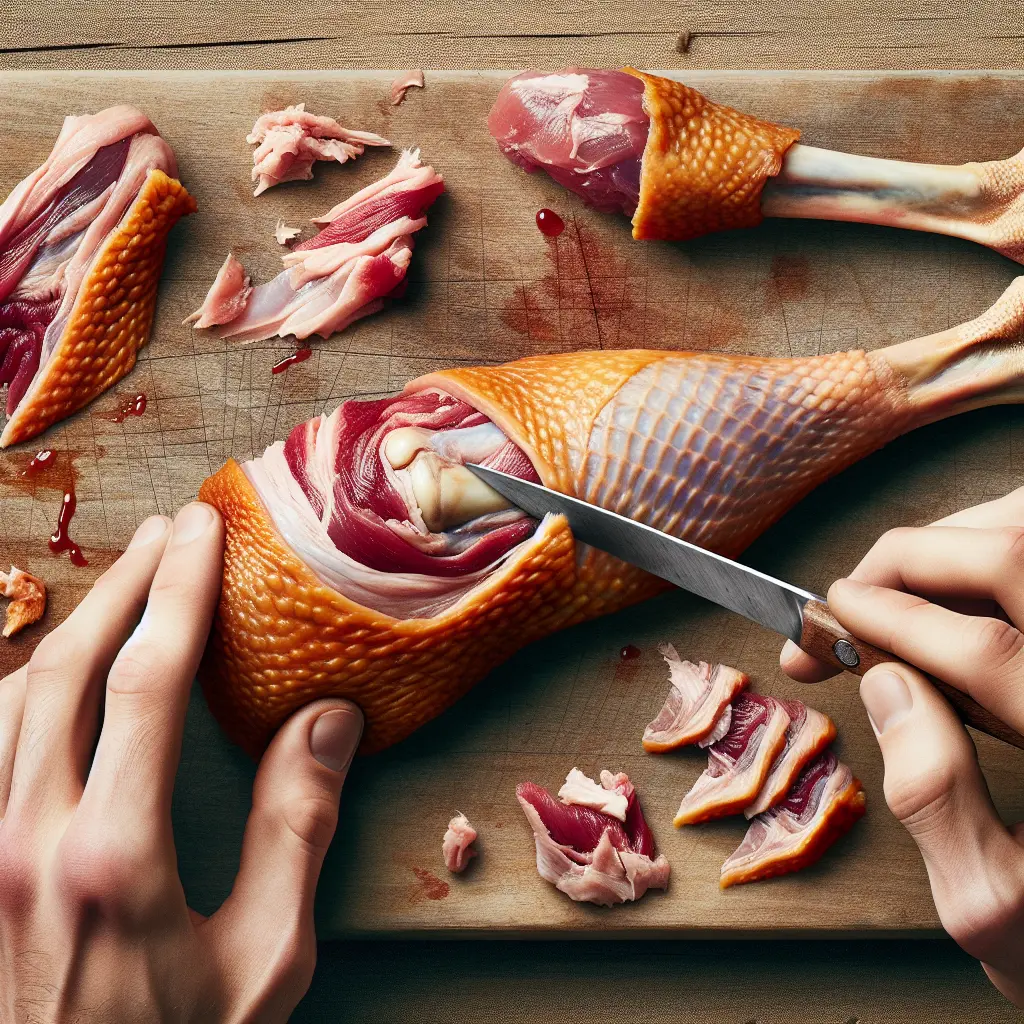The Culinary Canvas of Duck Leg: A Symphony of Flavors
Duck leg, a prized delicacy in culinary circles, captivates taste buds with its distinctive, rich flavor profile. The meat boasts an intense savoriness, complemented by a subtle gaminess that adds depth and complexity to dishes. Its texture, when cooked skillfully, is a harmonious blend of tenderness and a slight chewiness, creating a delightful eating experience.
Duck leg's culinary versatility knows no bounds. It can be roasted, braised, confit, or grilled, each method yielding unique flavors and textures. Roasting brings out a crispy exterior and succulent interior, while braising results in fall-off-the-bone tenderness enveloped in a flavorful sauce. Confit, a traditional French technique, involves preserving the leg in its own fat, infusing it with an unparalleled richness. Grilling imparts a beautiful char and smoky aroma, creating a delightful contrast to the meat's inherent savoriness.
Duck Leg: A Nutritional Powerhouse
Beyond its culinary prowess, duck leg is a nutritional powerhouse, offering an array of essential nutrients. It is an excellent source of protein, providing approximately 25 grams per serving, crucial for building and maintaining muscle mass. The fat content, primarily composed of monounsaturated and polyunsaturated fats, contributes to heart health by lowering cholesterol levels.
Duck leg also contains significant amounts of iron, essential for red blood cell production, and zinc, which plays a vital role in immune function. Additionally, it is a good source of B vitamins, including niacin, riboflavin, and thiamin, which are involved in energy metabolism and nervous system function.
Perfect Pairings: Enhancing the Duck Leg Experience
To elevate your duck leg dining experience, consider pairing it with complementary flavors and textures. Roasted root vegetables, such as carrots, parsnips, and potatoes, add a touch of sweetness and earthiness that harmonizes with the duck's richness. Braised red cabbage, with its tangy-sweet flavor profile, provides a delightful contrast to the meat's savory notes.
For a touch of elegance, consider serving duck leg with a classic orange sauce. The sweet and citrusy flavors of the orange complement the duck's richness, creating a harmonious balance of flavors. Alternatively, a rich and flavorful red wine sauce can enhance the meat's savory depth, adding a touch of sophistication to the dish.
Conclusion
Duck leg is a culinary treasure, offering a delectable flavor profile, nutritional benefits, and endless culinary possibilities. Whether you choose to roast, braise, confit, or grill it, duck leg promises an unforgettable dining experience. By exploring its versatility and pairing it with complementary flavors, you can unlock the full potential of this culinary gem and create dishes that will tantalize your taste buds and leave a lasting impression on your palate.
How many calories are in Duck Leg?
Each 1 leg, bone removed of Duck Leg contains 200 calories.
Duck Leg Nutritional Information
| Nutrient | Amount per 1 leg, bone removed (92g) |
|---|---|
| Calories | 200 Calories |
| Protein | 25g |
| Fat | 10g |
| Saturated Fat | 2.7g |
| Cholesterol | 0.105mg |
| Carbohydrates | 0g |
| Dietary Fiber | g |
| Sugar | g |
| Sodium | 0.101mg |
| Potassium | mg |
| Calcium | 0.0092mg |
| Iron | 0.0019mg |
